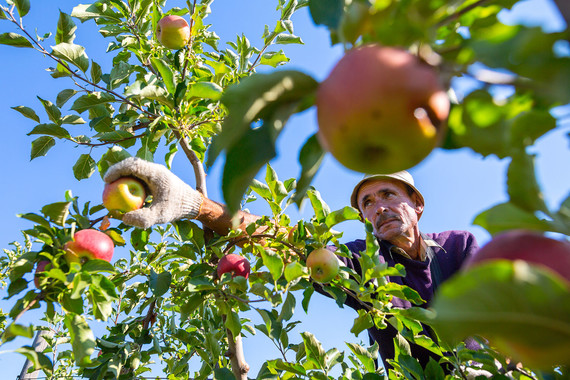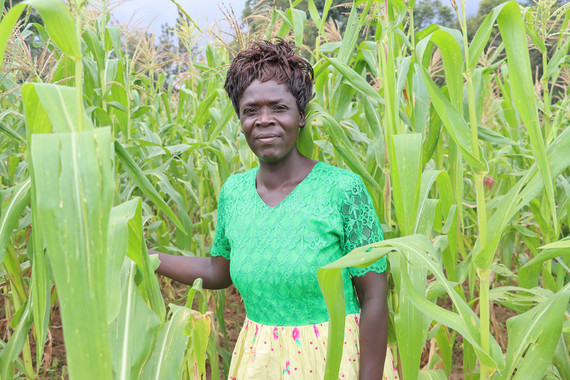|
|
JULY 2022
Working together to avert
a global food crisis
We’re standing at the precipice of a global food security crisis. Up to 40 million people could be pushed into poverty and food insecurity this year alone as a result of Russia’s invasion of Ukraine. And up to 20 million people in Kenya, Ethiopia and Somalia are at risk as a historic drought rages on in the region known as the Horn of Africa. Responding to this crisis is going to take all of us.
This month, U.S. Agency for International Development Administrator Samantha Power announced nearly $1.3 billion in critical humanitarian and development assistance to tackle rising hunger, poverty and malnutrition in the Horn of Africa. This includes $90 million, subject to congressional approval, in long-term investments to scale drought tolerant crops, mitigate post-harvest loss and waste, and support social protection and safety nets.
By bridging the gap between humanitarian and development efforts, Feed the Future helps communities take the lead – working hand-in-hand with smallholder farmers and partner countries to break the cycle of hunger and poverty. Ending hunger is still possible. From sub-Saharan Africa to India, read this month’s stories to see how families are standing up to today’s crisis and paving the way for long-lasting and sustainable change.
|
|
 How the U.S. government's development finance arm helps communities respond to crises and conflict
The U.S. International Development Finance Corporation (DFC) partners with the private sector to finance solutions to the most critical challenges facing the developing world, including food insecurity and malnutrition. Feed the Future sat down with DFC’s first-ever Chief Development Officer Andrew M. Herscowitz for a Q&A about this innovative work that is key to responding to the global food security crisis.
 Enriching farms and food in sub-Saharan Africa
With fertilizer prices at an all-time high, find out how local smallholder farmers across Africa are making the most of local fertilizer with practices learned from the Feed the Future Innovation Lab for Current and Emerging Threats to Crops.
 Farmers in DRC learn new techniques as fertilizer costs rise
In the Democratic Republic of the Congo, Justine Lumbwe Konde joined a farmer field school organized by Feed the Future to fight fall armyworm, an invasive pest, that ravaged her maize farm, costing her income and resources like fertilizer. Along the way, she’s unlocked new ways to increase her harvests and maximize fertilizer resources.
|
|
USAID announces new life-saving aid and development assistance to the Horn of Africa
Administrator Samantha Power announced that the U.S. Agency for International Development is providing nearly $1.3 billion in critical humanitarian and development assistance to tackle the historic drought and hunger crisis in Ethiopia, Kenya and Somalia, made worse by Russia’s invasion of Ukraine.
USDA underscores innovation at G20 Meeting of Agricultural Chief Scientists
U.S. Department of Agriculture Chief Scientist Dr. Chavonda Jacobs-Young led the U.S. delegation, emphasizing the importance of agricultural research and development in tackling the challenges of global food security and climate change.
Call for proposals: USADF
The U.S. African Development Foundation is accepting proposals from agricultural cooperatives, producer groups and enterprises in Uganda for grant financing to extend capabilities, increase revenues, create jobs, improve farmer incomes and achieve sustainable market-based growth. Apply by September 30, 2022.
|
|
Responding to the global food security crisis
Read Feed the Future’s latest fact sheet to see how we’re doubling down on efforts to directly address the staggering impact of high food, fuel, and fertilizer prices and mitigate the impacts on poverty, hunger and malnutrition.
New research highlighting impact of Feed the Future Innovation Labs
An economic analysis on the impact of international agricultural research and development conducted at U.S. universities through the Feed the Future Innovation Labs over 40 years highlights that every $1 dollar invested provides $8.52 in benefits.
Food loss and waste 101
It is estimated that we waste and lose around a third of all the food that is produced around the world, costing significant financial and scarce natural resources. The U.S. Agency for International Development launched a new food loss and waste podcast to share what Feed the Future partners can do to be a part of the solution.
|
|
Photo Credits: Oscar Leiva, Mercyline Tata, Thierry Bikuba
Feed the Future is the U.S. Government’s global hunger and food security initiative. |
|
|
|